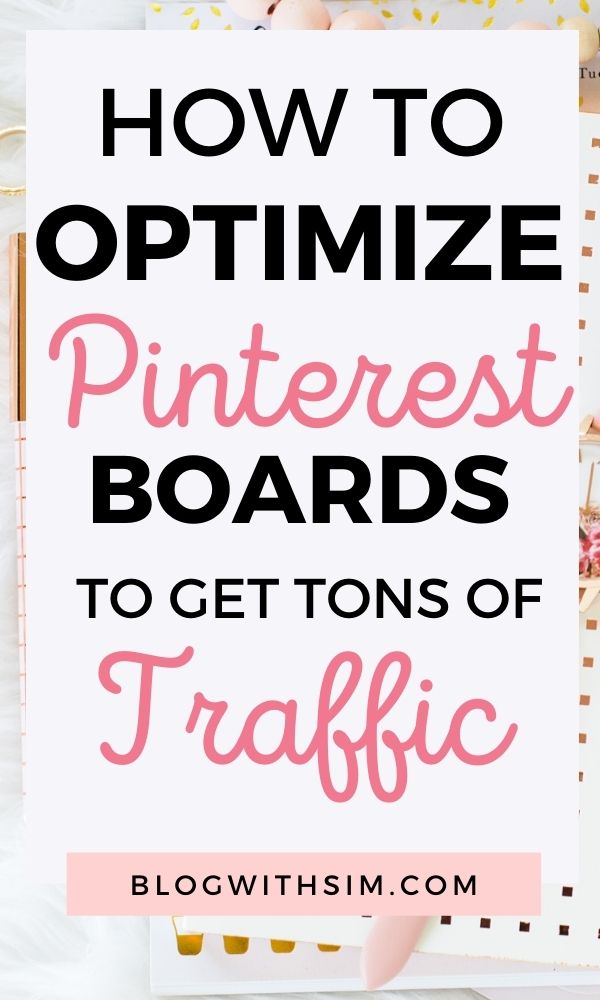Are you looking for some ideas to get traffic from Pinterest? I will show you how to optimize your Pinterest boards to get traffic and get found on Pinterest.
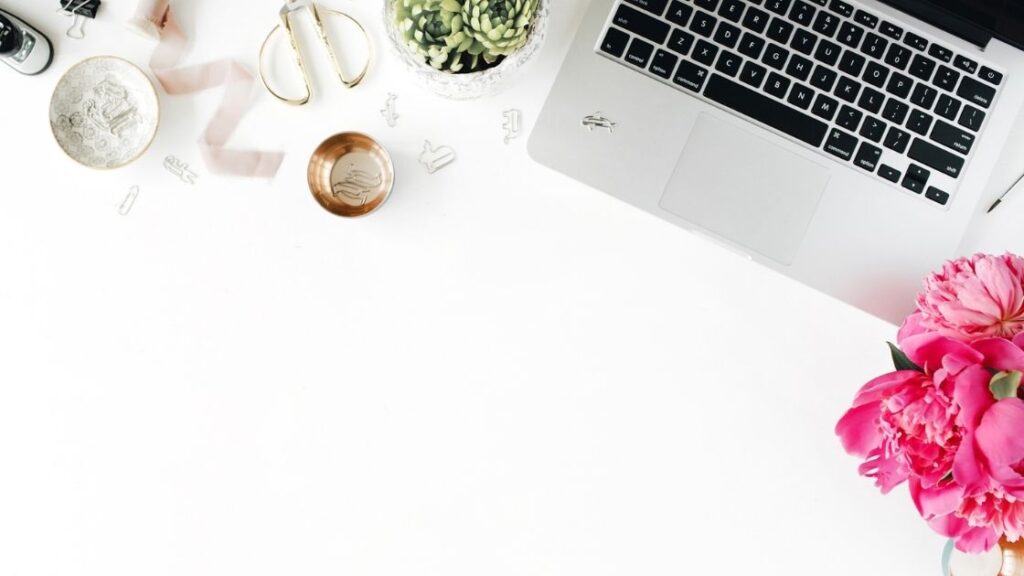
Disclaimer: This post may contain affiliate links. For full disclosure, read here
Pinterest is changing at an incredible speed. The only thing which never changes and will always be helpful is the optimization of your boards and profile using SEO.
If you have started your blog and thinking of getting traffic, you should start working on Pinterest NOW.
How to start an optimized Pinterest account
How to optimize your Pinterest boards to get traffic
When you are in the initial phase of creating a Pinterest account, you may not be familiar with all the strategies required for creating an optimized account. Gradually you will come to know all the things but creating boards is one of the most essential tasks on your Pinterest account.
Create your boards optimized from day one so that you don’t have to worry later. Having everything set up correctly from day one will help to give signals to Pinterest about your account.
Doing all the right things will have a significant impact on your account and growth.
How to create awesome board names
How to make Pinterest Pins go viral
The best Pinterest Marketing Strategies you need in 2020
1. Finding the right board names
The very first thing when creating an optimized Pinterest profile is to find the right board names according to the niche of your blog. To find proper names, write your main keyword in the Pinterest search tool and copy all those keywords somewhere.
I find Google sheets to be very useful in keeping your keywords organized at one place. You can use these keywords later whenever required.
Like Google, Pinterest has its own SEO. It doesn’t work the same way as Google, but the impact is tremendous. Using SEO to find keywords related to your own blog’s main keyword will help you grow your account.
As of now, Pinterest has started liking those accounts that have niche-specific boards.
To know more about Pinterest SEO, you can read
How to use Pinterest SEO to grow your traffic
2. Writing keyword-rich descriptions to optimize your Pinterest boards
Board descriptions is a great place to indicate what your board is about. If someone lands on your board description, they will get an idea about the content of your board. Try to include the main keyword in board descriptions and also longtail keywords.
Write the description as if you are talking and explaining the content of the board to someone. Use longtail keywords beautifully in the sentences. Don’t just stuff the keywords.
Stuffing keywords can come as spammy. You don’t need to spam your account.
How to find Keywords to write board descriptions and names
As you know, keywords are required to get found on Pinterest. Keywords help the algorithm to know about your account.
To find the keywords related to your blog topic, write your main keyword in the Pinterest search tool.
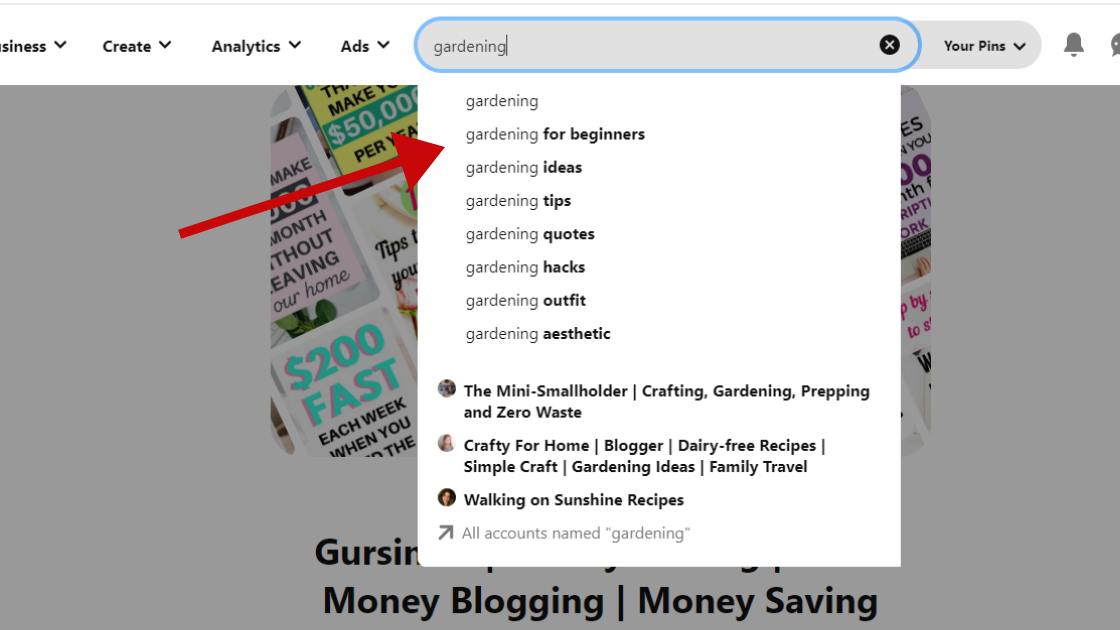
Here I entered my main keyword as Gardening and Pinterest suggested these keywords
- Gardening
- Gardening for beginners
- Gardening ideas
- Gardening tips and many more
You can use your own blog topic here. And make a note of what comes up after. These suggested words are the keywords you can use to name your boards for different categories.
When I click on Gardening, and I got this,
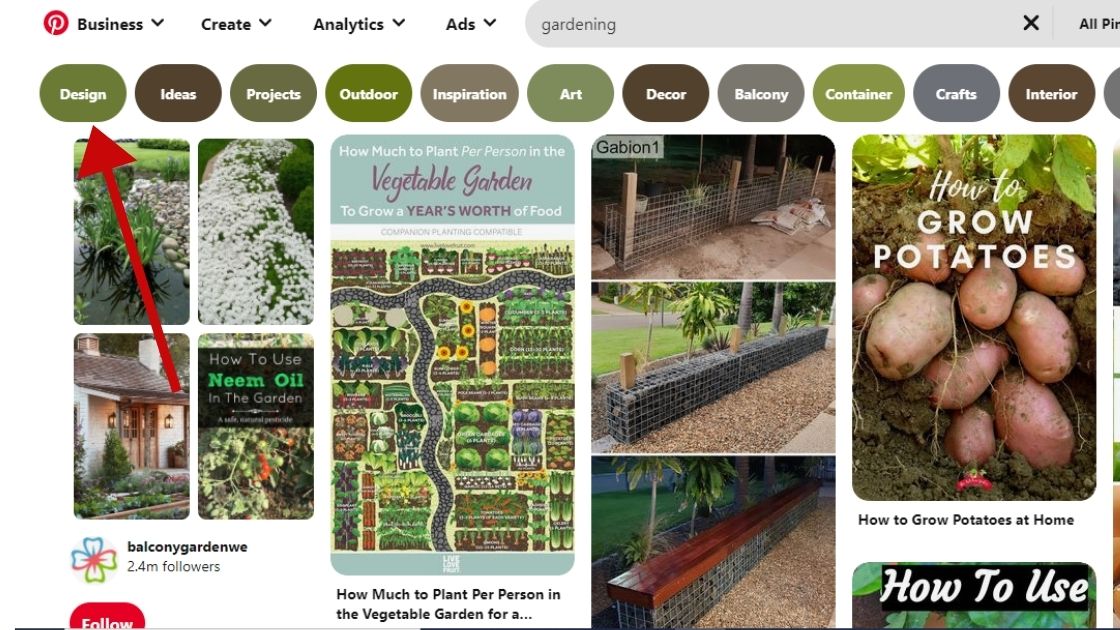
These are the Pinterest guided keywords that can be used to create longtail keywords. These bubble words are arranged in the order of most searched to least searched. Words on the left are searched more often on Pinterest.
You can create longtail keywords by combining these bubble words with your main keyword or categories.
3. Keep your Private boards separate
Always keep your personal boards and brand (blog) boards separate. A better option is to have a different personal account for your other nonblog related stuff.
When someone lands on your account, he/she is looking for ideas related to what you write. You don’t want to confuse them by showing different unrelated boards.
For example, if you blog about parenting but have many boards about Gardening, your audience will not be pleased about it. Keep your boards as niche as possible to provide the best user experience.
If you want to have some boards that are not related to your account, you can keep those boards secret. Use these boards to save ideas for personal use.
How to make your board private (Secret)
To make your board secret, hover the cursor over the board and click on the edit pencil.
Scroll down and you will be shown the option to keep your board secret
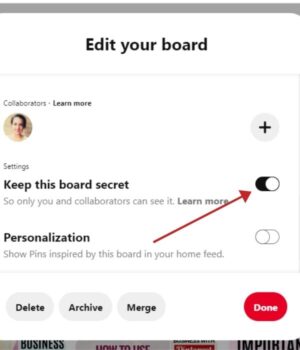
Move the button and keep it black as shown in the picture and click on done.
Keeping your Personal and niche related bords will help in having a great SEO from day one.
4. Different boards for different categories
As you know, you will be creating a board explicitly adding your own content. This can be called your anchor board that will contain only posts from your own blog.
If you have similar content, you can create just one board and divide it into different sections.
But the actual problem arises when you have categories that are unrelated to each other. You can create various boards for different categories. For example, if the categories on your blog are: like Gardening, Save Money, Productivity, you can create separate anchor boards for all of these.
- Best of your blog name: Gardening
- Best of your blog name: Save money
- Best of your blog name: Productivity
This is just an example but will help you to keep the content of your boards organized.
5. Create sections in the boards
Pinterest boards have this feature of adding sections to the boards. Sections don’t have any SEO value, but they are great for organizing different subcategories.
For example, if you have a board for Vegetarian Recipes, you can add sections for gluten-free, salad recipes, Veg meals, as per your requirement.
Sections help users find the things they are looking for easily.
How to create sections in the boards
When you click on edit on a board, you willl see a +( Plus) sign at the centre of the board. Click on it and you will be shown this page.
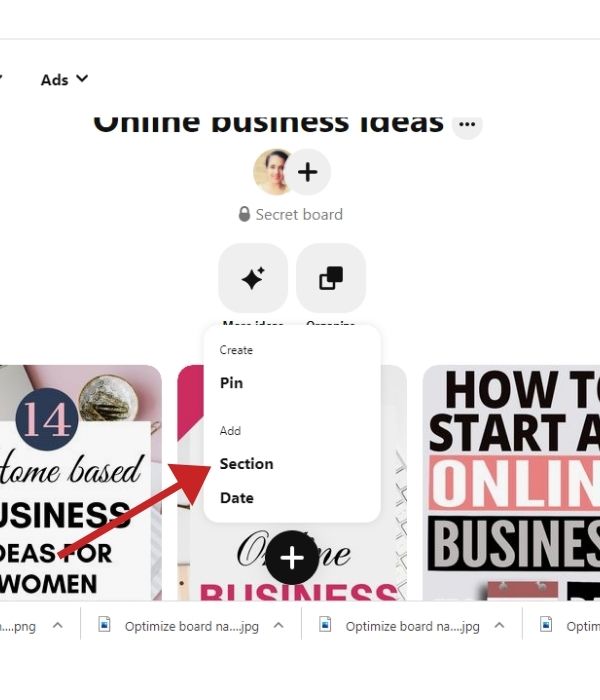
Now, click on section and add the subcategory. This will be the section of your board. Click on add to save.
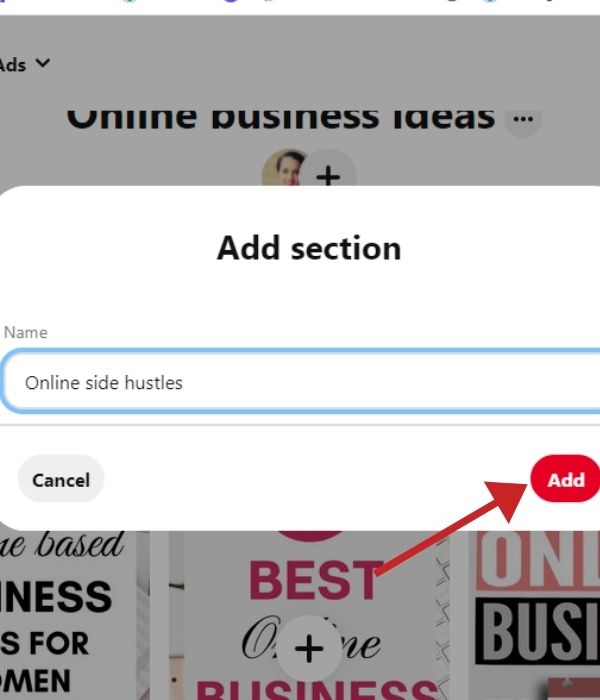
Pro tip: Even if you can have sections, I still recommend having separate boards for different categories.
6. Add relevant pins to boards
Always add relevant content to the appropriate boards. Adding unrelated and random content may confuse the algorithm, and your pins will not get the required traction.
Pinterest advises pinning your pins to the most relevant boards first, which means as close to the topic as possible.
The keywords you use in the pin descriptions and titles should be similar to the keywords used in board descriptions.
7. Archive older boards
If you have boards that you don’t want to use for your account anymore, archive them. This way, your board will be hidden from the public, but you will retain the followers.
When you delete a board, you lose all the followers of that board. Sometimes, people don’t follow the whole profile; they just follow the individual board.
Also, you may need that board in the future, especially if the board is seasonal. You may make that board public when the time comes next year.
How to archive aboard
When you hover your cursor over a board you want to archive, click on the edit pencil. You will be shown a page like below. You will find three options at the end. DELETE ARCHIVE and MERGE.
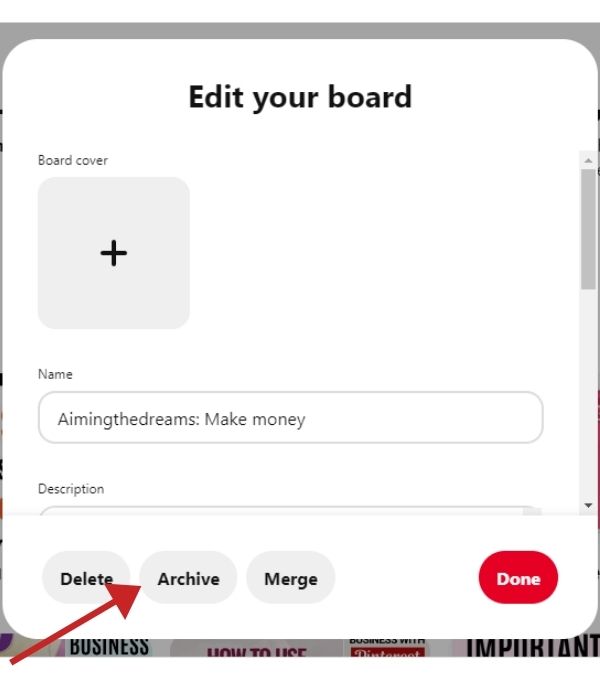
Click on archive and done. Now, your board will be archived and no longer public. No one can see your private board now. You can unarchive anytime in the future.
These are a few steps that can help you to optimize Pinterest boards that will help you in the long run. Pinterest is a marathon, not a sprint. Take your time to optimize your profile and boards to give as much chance as possible to succeed on Pinterest.
